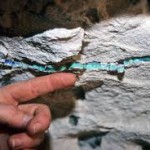Cutting Through Brand Marko-babble.
“Brand identities create memorable distinction and differentiation in marketplaces in which meaningful functional product or service differentiation is increasingly impossible to secure. They help convey stories and meaning that assist decision-making, establish relevancy and positive disposition.”
This is a quote from a friend and really smart branding person. Someone who taught me a lot. It is true as true can be. It explains brand identity in a thoughtful, complete and rich way — yet it is a bit dense and suffers from what I call marko-babble. If you parse the sentence slowly it makes sense. It’s cogent. However, in branding circles where there is so much marko-babble quotes like this gets sucked right in.
I have worked really hard to take the marko-babble out of branding. I like to think I’ve simplified the definition and the outputs. Here are a couple of boil downs, in consumer language, for you to ponder.
A brand strategy is an “organizing principle for product, product experience and messaging.” (Some might argue product is the domain of product strategy and they would be right. But after the product is created, enhancements, extensions and evolutions need to be true to the brand strategy.)
A brand strategy is 1 claim and 3 proof (support) planks. Planks are populated by actual and future examples of what a company is great at and what consumers want most.
In sum, my branding meme is this: Branding is about claim and proof. Proof and deeds. Deeds and experiences. Strategically organized and tightly managed.
Marko-babble beware. Peace.






